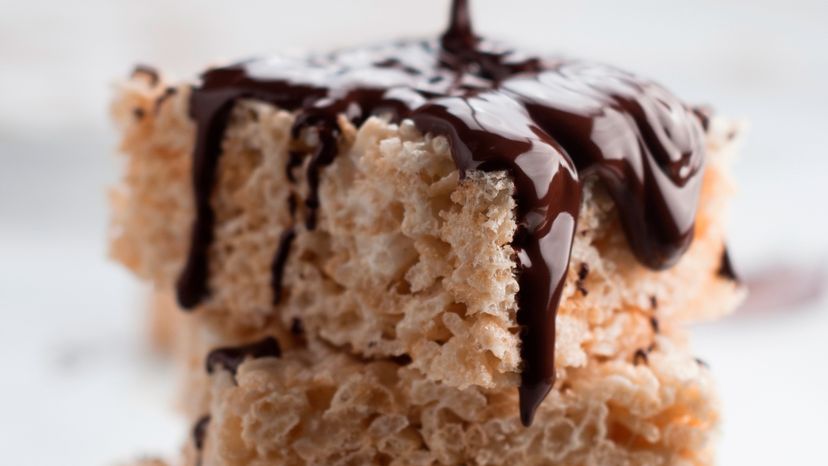
Rice Krispies are an example of a puffed grain cereal, and the three puffed grains that you commonly see in the cereal aisle are rice, wheat and corn. There are also a lot of puffed dough cereals -- in the United States, you see Trix, Kix, Cheerios, Cocoa Puffs and so on. Puffing is very common in the breakfast cereal industry!
In the case of a Rice Krispy, you pop the rice similar to the way you pop popcorn. If you have read about how popcorn works, you know that you need three things to make popcorn: Moisture inside the kernel, starch inside the kernel and a hard shell to contain the pressure. Normal rice is missing the moisture, but if you condition it with steam to get enough moisture inside the kernel, you can either oven-pop rice or oil-pop it. It's not as dramatic a transformation as popcorn, but it pops using the same mechanism. Rice Krispies are oven-popped, which gives them the right texture to "snap! crackle! pop!" when milk is added.
Advertisement
Another common puffing method for rice (as in Quaker Puffed Rice), corn (as in Sugar Pops) or wheat (as in Sugar Smacks) is called gun puffing. You cook/condition the grain to get the moisture right and pressurize it to something like 200 PSI. Then you release the pressure instantly. The pressure stored inside the kernel puffs the kernel when the pressure is released. If you have ever heard a cereal ad that talks about "shooting the cereal out of a gun," this is what they are talking about! Puffing the rice makes it spongy instead of crispy.
In the case of puffed dough, you can create tiny dough balls and then hot-air pop them. If you heat a dough ball fast enough, the moisture in the dough flash boils and puffs the ball. A cereal like Cap'n Crunch is extruded, cooked, cut, pressurized, puffed and dried in a continuous process -- which is why you can see that the ends of each piece look like they've been squeezed.
Here are several interesting links:
- How Food Works
- How Calories Work
- How Fats Work
- How Fat Cells Work
- How Dieting Works
- How does popcorn work?
- Food Product Design: Truth of Grain
- Texas Farm Bureau: Rice -- In Touch With You Daily
- Kellogg's Rice Krispies
- AAA Recipes: Recipes using Rice Krispies
- The Big Inch, Yukon Land, and Sargeant Preston -- an infamous 1955 land deed giveaway in Quaker Puffed Rice and Puffed Wheat cereal boxes
Advertisement